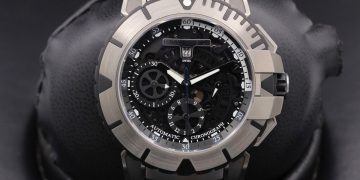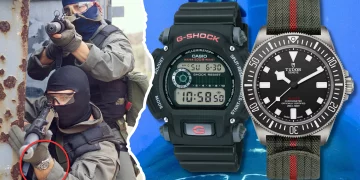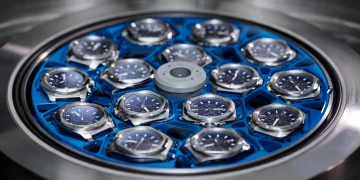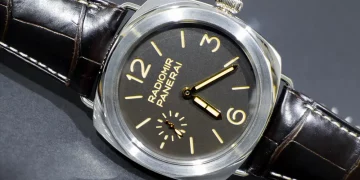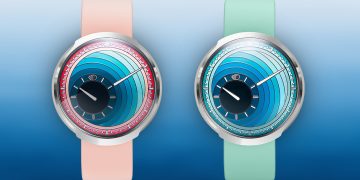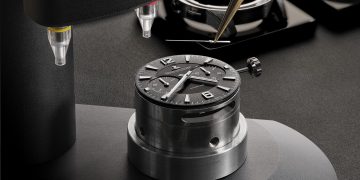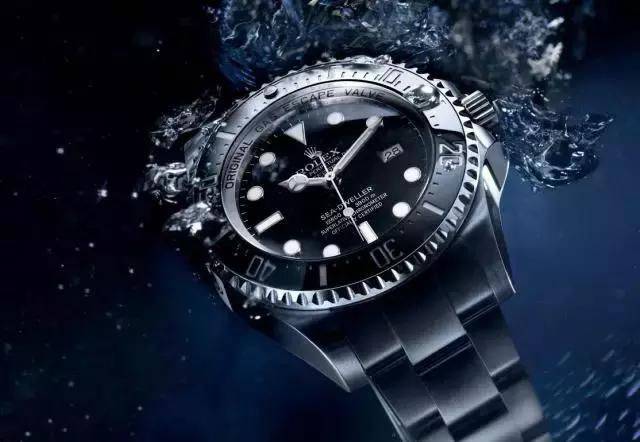Water resistance is one of the most important features of a modern watch, especially for high-end and luxury models. Whether you’re swimming, showering, or simply wearing your watch in the rain, ensuring that your watch remains waterproof is essential to protect its internal mechanisms from water damage. However, many watch owners often overlook the importance of regular water resistance testing as part of their daily maintenance routine.
In this article, we will explore why water resistance testing is crucial for the longevity and functionality of a watch, the factors that affect water resistance, and how regular testing and maintenance can protect your investment.
1. Understanding Water Resistance in Watches
Water resistance refers to the ability of a watch to resist the infiltration of water. Watches are typically rated for water resistance according to specific depths (measured in meters) and the type of activities the watch can withstand, such as swimming, diving, or just occasional exposure to water. These ratings can range from 30 meters (which offers basic protection from splashes) to 1000 meters or more for professional diving watches.
Water-resistant watches are built with special gaskets, seals, and casebacks designed to keep water from entering the watch’s case. However, over time, these protective components can wear down due to regular use, aging, or exposure to external factors like extreme temperatures, dust, or chemicals. As a result, a watch that was once perfectly waterproof may lose its ability to keep water out if not maintained properly.
2. Why Water Resistance Testing Is Essential for Daily Maintenance
a. Aging Seals and Gaskets
One of the main reasons water resistance testing is vital is that the seals and gaskets inside the watch can degrade over time. Rubber seals, in particular, can become brittle or lose their elasticity due to environmental factors such as temperature fluctuations, UV exposure, and chemicals. This can compromise the watch’s ability to resist water infiltration.
Regular water resistance testing ensures that these seals are still functioning properly. Watchmakers or repair professionals can perform tests to confirm that the watch remains adequately sealed and that the waterproof gaskets have not worn down. By testing for water resistance at regular intervals (typically once a year or after a major service), you can prevent potential water damage from occurring.
b. Accidental Damage to the Case and Crown
In daily use, a watch may be subjected to unexpected bumps or drops. Even though the watch may seem intact, the case or crown can suffer minor damage that is not immediately visible. Small cracks or shifts in the casing or crown area can lead to water penetration, particularly if the watch is exposed to moisture.
Water resistance testing helps identify such issues early on. A simple pressure test or vacuum test can reveal any compromised areas of the watch where water could potentially enter. Identifying and repairing these problems before they lead to significant damage can save your watch from costly repairs and preserve its functionality.
c. Pressure and Depth Ratings
Watches are rated for water resistance to specific depths, but many people fail to consider how much pressure a watch can withstand. If a watch with a rating of 30 meters is worn while swimming or exposed to the pressure of deep diving, the gaskets and caseback may fail, allowing water to seep into the movement. Conversely, a diver’s watch rated to 300 meters or more is built to withstand the pressure found at significant depths, but without testing, it’s difficult to know if it’s truly capable of withstanding the rated pressure after years of use.
Regular testing ensures that the watch remains capable of handling the conditions it was designed for, whether you’re using it for swimming, diving, or just daily wear.
3. Factors That Affect a Watch’s Water Resistance
Several factors can impact a watch’s ability to maintain water resistance, including the following:
a. Wear and Tear
Even the best-made watches can suffer from gradual wear and tear. The watch’s gaskets, crown, and caseback seals are all vulnerable to friction, temperature changes, and other environmental conditions. Over time, these seals may deteriorate, causing a loss of water resistance. Regular testing allows watch owners to monitor these changes and ensure that the watch maintains its water-resistant properties.
b. Temperature Extremes
Extreme temperatures, whether hot or cold, can affect the elasticity of the seals and gaskets in a watch. Cold temperatures can cause rubber seals to become brittle, while heat can cause them to expand and lose their effectiveness. Additionally, exposure to direct sunlight for extended periods can lead to UV damage, further compromising the integrity of the seals.
Water resistance testing helps ensure that even in fluctuating temperatures, your watch remains sealed and waterproof. If you’re in a region with drastic temperature changes or plan to engage in activities involving extreme heat or cold, testing the watch’s resistance can prevent unexpected issues.
c. Chemical Exposure
Many chemicals, such as cleaning agents, cosmetics, and even saltwater, can deteriorate the seals of a watch over time. Saltwater, in particular, is notorious for causing corrosion, which can compromise the seals and gaskets, even if the watch is rated for water resistance.
To ensure your watch remains water-resistant, it’s important to regularly test it and make sure it’s in good condition to withstand chemical exposure. Routine maintenance is key to ensuring that saltwater, chlorine, and other harsh substances don’t permanently damage the watch.
d. Pressure from Submersion
Water resistance tests also verify how the watch performs under different pressure conditions. When submerging a watch into water, the internal pressure increases. Watches rated for deeper water resistance (e.g., 200 meters or more) are built to withstand more pressure. Regular testing checks the internal seals and ensures that the case can handle the pressure exerted when submerged at depth, protecting the internal movement from water infiltration.

4. The Types of Water Resistance Tests
There are several ways to test a watch’s water resistance, and the method used often depends on the age of the watch, brand, and model. Some of the most common water resistance tests include:
a. Air Pressure Test
The air pressure test involves placing the watch in a special chamber where the air pressure is increased. The watch’s ability to withstand the increased pressure is observed to check for any leakage. This method is ideal for identifying problems with the watch’s seals and gaskets. If the watch fails this test, it indicates that the watch is no longer properly sealed.
b. Vacuum Test
The vacuum test works similarly to the air pressure test, but it creates a vacuum around the watch to test for leaks. This test is more commonly used for high-end watches that require very precise water resistance measurements. It can reveal even the smallest leaks, ensuring that the watch remains fully protected against water exposure.
c. Water Immersion Test
The water immersion test involves submerging the watch in a tank of water while applying pressure to check for leaks. While less common in modern testing procedures, it is still sometimes used for practical testing. However, the test is only recommended when the watch is known to be in good condition and no damage has occurred.
5. The Importance of Regular Testing and Maintenance
Even if your watch is still water-resistant, seals and gaskets wear out gradually over time. A watch that has been properly sealed and tested may begin to lose its ability to keep water out due to aging gaskets, loose crowns, or deteriorated casebacks. Regular water resistance testing is essential for ensuring that your watch continues to function as designed, especially if you frequently wear it in water-related activities.
Water resistance testing can also identify any potential issues that may not be immediately obvious, such as internal condensation, rusting, or the breakdown of lubricants inside the movement. By identifying these problems early, you can avoid costly repairs and ensure that your watch stays in optimal condition for years to come.
6. Conclusion
Water resistance testing is a critical part of daily watch maintenance, especially for high-end watches that are exposed to water regularly. Over time, seals and gaskets degrade, potentially leading to water damage. Regular testing ensures that your watch continues to perform as intended, protecting the movement from harmful elements like water, dust, and chemicals.
By scheduling periodic water resistance tests, particularly after any major service, exposure to extreme conditions, or changes in the watch’s external appearance, you can ensure the longevity of your timepiece. Whether you wear your watch for daily activities or for more extreme adventures like diving, proper maintenance is key to preserving its performance and protecting your investment.



